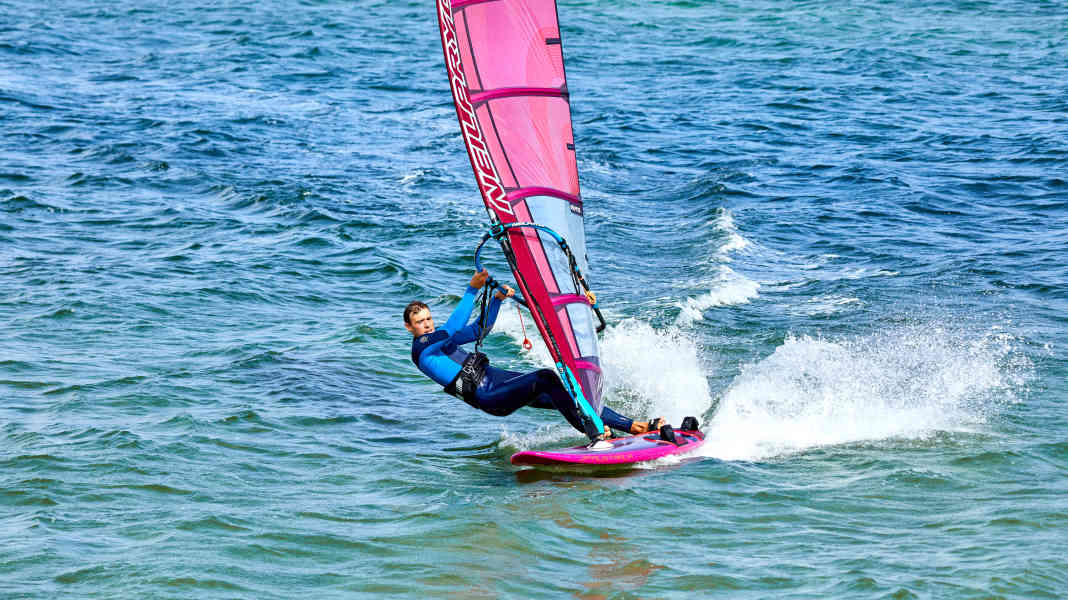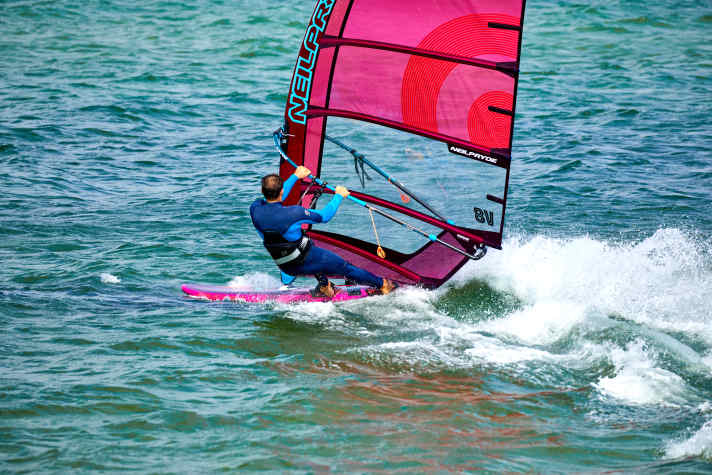
The spinout comes suddenly and unexpectedly and is about as popular as a toothache - it puts an abrupt end to gliding fun. It occurs when the current suddenly breaks off at the fin, causing the tail to slide uncontrollably downwind. On boards with small fins (e.g. wave or freestyle), the tail can be caught again quite easily, but freeride and freerace boards often require a complete restart - get out of the straps, start planing again and watch your grinning mates disappear into the distance.
The majority of spinouts are avoidable if you make the right adjustments. The length and profile of the fin, the board trim via the position of the base plate and loops, the position of the centre of effort as a result of the sail trim and, of course, your own riding technique all have an influence on the frequency of spinouts.
The best tips against spinout
Base plate in the centre
Many surfers who have problems with spinouts try to solve the problem by pushing the base plate forwards. On the face of it, this makes sense, as it also shifts the centre of effort forwards and takes pressure off the fin. However, the overall trim of the board and sail also suffers when the base plate is pushed completely forwards. The board will no longer glide freely and will be uncomfortable in chop, which can massively impair speed and control. The centre position therefore remains the clear recommendation.
Loops inwards
If you ride the straps in a far out position, you often put a lot of lateral pressure on the fin. If you often struggle with spin-outs when planing, you will ride more comfortably and ultimately even with a higher average speed if the straps are positioned a little further inwards.

Run at a controlled height
The board must have a solid planing speed to ensure a stable current at the fin. If you switch to a closehauled course too soon after planing and immediately build up pressure, you will encourage the tendency to spin out. The following therefore applies: After stepping into the loops, first accelerate and then switch to a closehauled course in a controlled manner.
More luff tension
Spinouts often occur when you are travelling with large sails. These have a longer boom and therefore the centre of effort is further back, which increases the pressure on the fin. If the sail is also trimmed too bulbous, the centre of effort moves even further back. You can feel this when - e.g. in gusts - the pull on the back hand increases sharply. This also increases the pressure on the fin and the risk of spinout increases.
surf tip: If the sail pulls on the back hand in gusts, pull the luff a centimetre further. Trim the outhaul rope only slightly flatter at first so as not to stifle the planing performance.
Longer fin
A longer fin is the last adjustment you can make. If the problem cannot be solved with trim, strap position and riding technique, a two to three centimetre longer fin can also make sense. Although fins with a thicker profile are usually a little slower than thin profiles, they are also less prone to spinouts as the current is more stable here. Another plus: thick profiles are slightly more powerful in light winds and especially in the planing phase.
